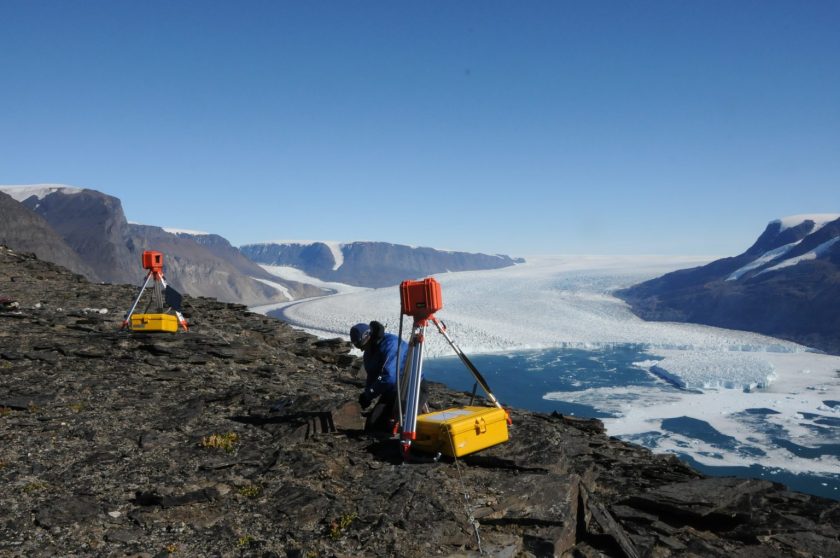‘Knickpoints’ Could Stall Glacial Thinning
October 29, 2021

The jagged terrain of Greenland’s mountains is protecting some of the island’s outlet glaciers from warm coastal waters, according to a team of researchers that included scientists from the Jackson School of Geosciences and NASA.
The scientists found that steep slopes in the bedrock under the ice form stabilizing areas the researchers termed knickpoints that prevent coastal thinning from reaching further inland.
The research was led by Denis Felikson, a NASA research scientist who started the work while earning a doctoral degree at the Jackson School. The results were published in December 2020 in Geophysical Research Letters.
Jackson School Professor Ginny Catania, a co-author, said that the research helps explain variability in glacier thinning observed by scientists.
“Some glaciers are thinning right next to others that are thickening,” she said. “Denis’ research has provided a framework for that understanding, and it’s very likely that all of the variability we observe in outlet glaciers is linked to variability in the bed topography between glaciers.”
The research shows that glacial knickpoints are surprisingly prevalent. Although that might be good news, the research also revealed vulnerability in northwest Greenland, an overlooked region of the ice sheet.
The scientists said that investigations of the bedrock near the coast is urgently required to learn how effective knickpoints are at holding back coastal warming, as is investigation of unprotected glaciers.
Catania and Felikson have already proposed an early warning system that will use machine learning to watch for instability in glaciers identified by the knickpoint analysis.
Back to the Newsletter